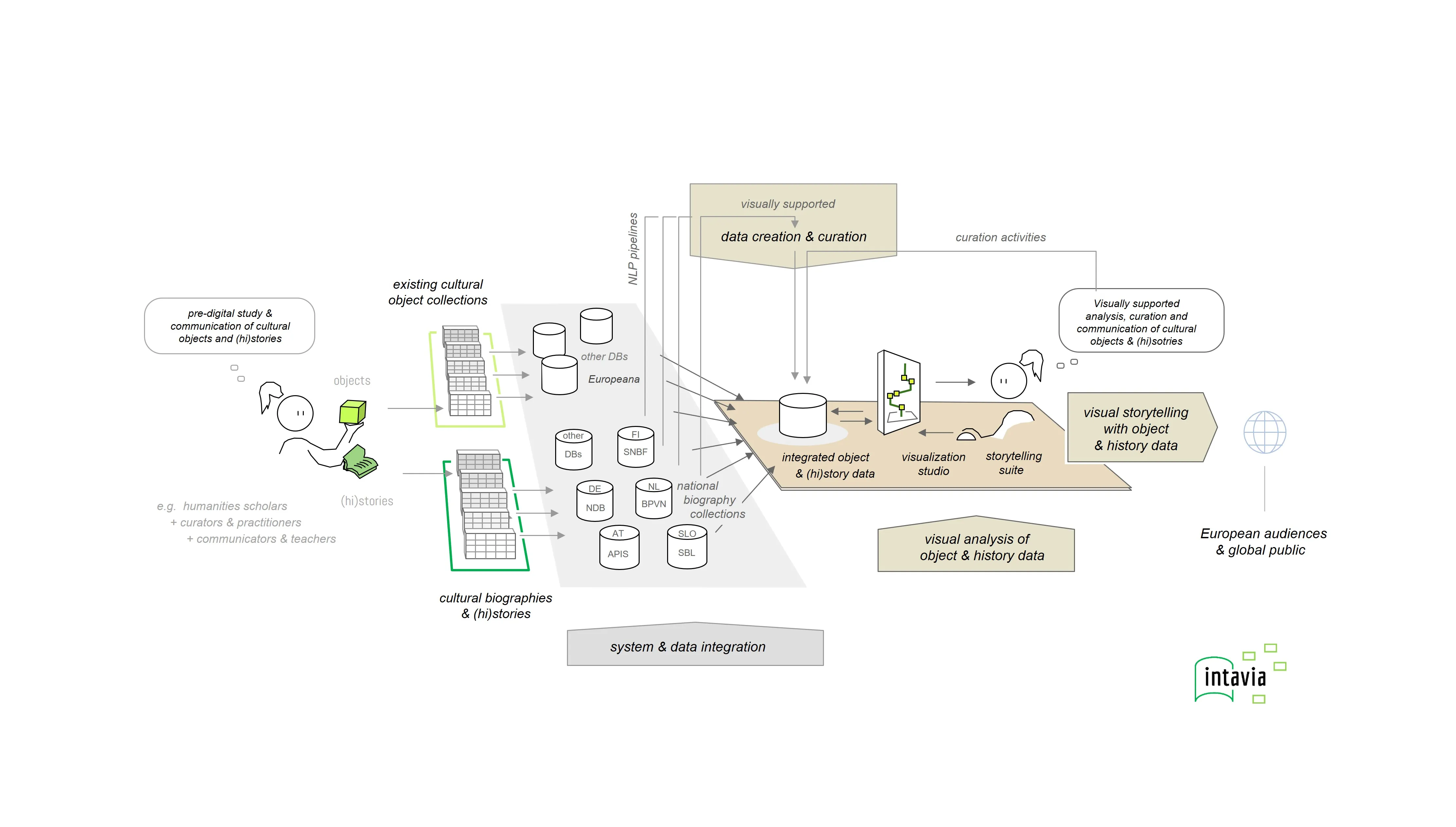
In/Tangible European Heritage - Visual Analysis, Curation & Communication
- Hosting organisations
- Universität für Weiterbildung Krems, Department für Kunst- und Kulturwissenschaften, ACDH-CH - Austrian Centre for Digital Humanities and Cultural Heritage, Free University Amsterdam, Slovenian Academy of Sciences and Arts (SASA), Universität Stuttgart, Aalto University, University of Helsinki, University of Southern Denmark (SDU), and Fluxguide Ausstellungssysteme GmbH
- Responsible persons
- Florian Windhager, Eva Mayr, and Matthias Schlögl
- Start
- End
In face of Europe’s cultural riches
Numerous digitization initiatives and cultural heritage databases have significantly improved access to cultural and historical data across Europe in recent years. Thus, tangible cultural assets from museums, archives and libraries have been made accessible online and bundled transnationally by platforms such as Europeana. At the same time, intangible cultural heritage - such as biographical knowledge about artists - has been collected and shared in the form of national biography databases. While these developments provide a good basis for the expanded reception and use of Europe’s cultural heritage, various limitations - such as the lack of interconnection, standardization, or readability of local data collections - prevent optimal utilization of the existing data.
Creating connections
The InTaVia project aims to overcome such obstacles through strategic and sustainable development of European information technology. For example, tangible and intangible European cultural heritage assets (“In/Tangible European Heritage”) will be brought together digitally for the first time to enable their mutual contextualization. In the future, this will enable a synoptic view of the “life and work” of European cultural actors: Starting with individual objects (for example, a painting or a piece of music) or historical-biographical events (from revolutions to cultural innovations), it will be possible to dive into entire collections of works or historically linked biographies. Through further aggregation, the cultural history of entire organizations or regions (of European cities as well as historical art genres) can subsequently be made visible and experienced. To this end, new ways of creating, curating, and transnationally integrating data must be developed. In addition, an advanced visual analytics studio will help experts (from historians to curators and cultural communicators) to make diverse constellations of historical artifacts and contextual knowledge visible to the public and to communicate European cultural history more effectively.
Visual information portal for im/material cultural heritage
With this objective, InTaVia will develop a prototypical information portal for the visual analysis and communication of tangible and intangible cultural heritage. This will provide new insights from the inconspicuous detail to the relational panoramas on European cultural heritage, opening new ways of knowledge transfer. In the spirit of ‘Linked Open Data’, the machine readability and linking of cultural data will be enhanced so that it does not have to be contemplated in an isolated fashion, but also contextualized by bigger pictures of Europe’s cultural past, in which the many connections between cultural, artistic, and scientific movements have always transcended political boundaries. The InTaVia results will benefit researchers, teachers, cultural journalists, public audiences, and ultimately the (self-)perception of Europe in a global context.
The project consortium
The transdisciplinary InTaVia consortium builds on successful collaborations in the field of European research infrastructures and digital humanities projects. The team brings together computer scientists with a focus on visualization, computational linguistics, and artificial intelligence with representatives from the digital humanities, cognitive science, cultural studies, and history. A broad network of prominent European museums and cultural heritage institutions